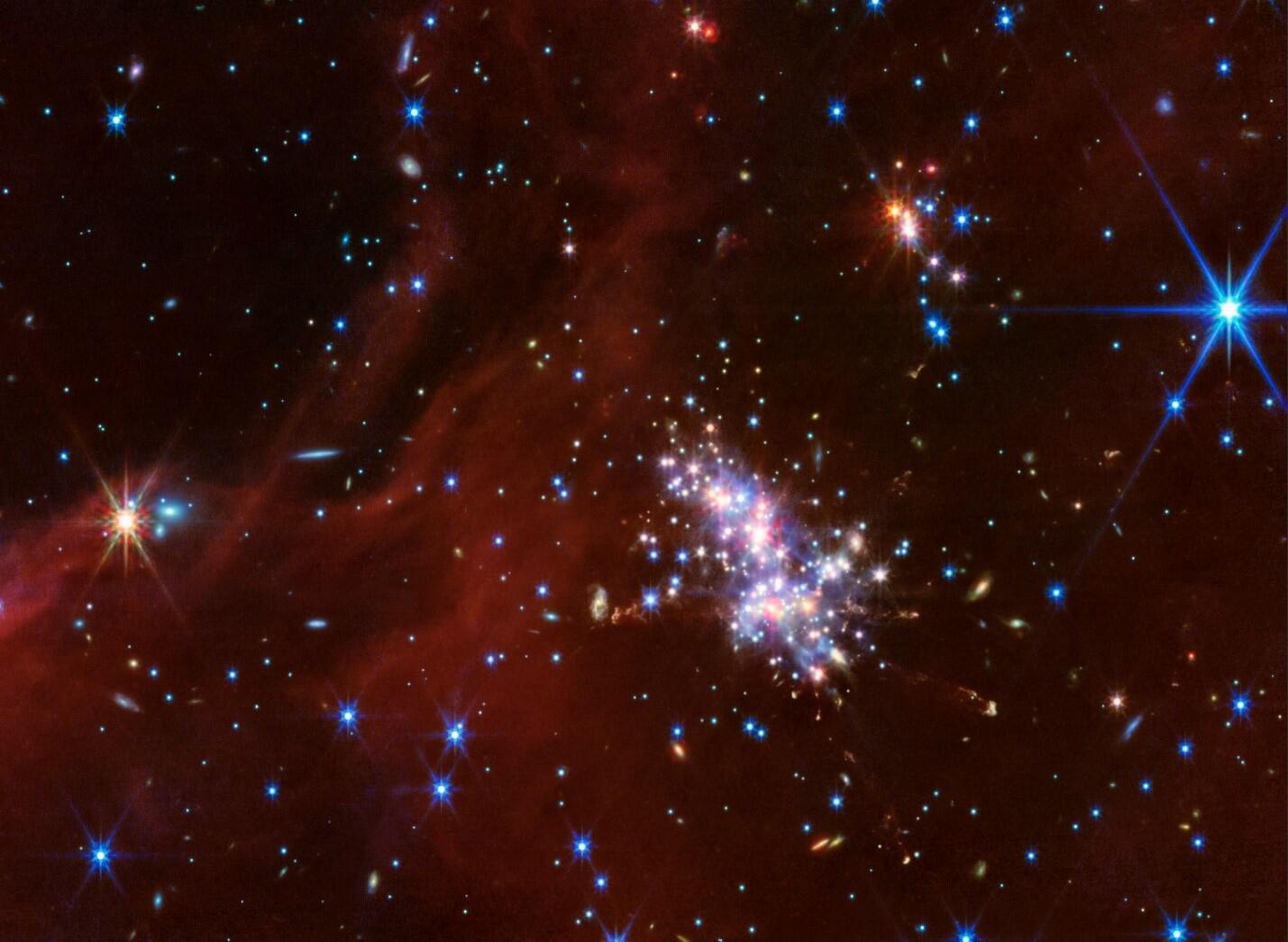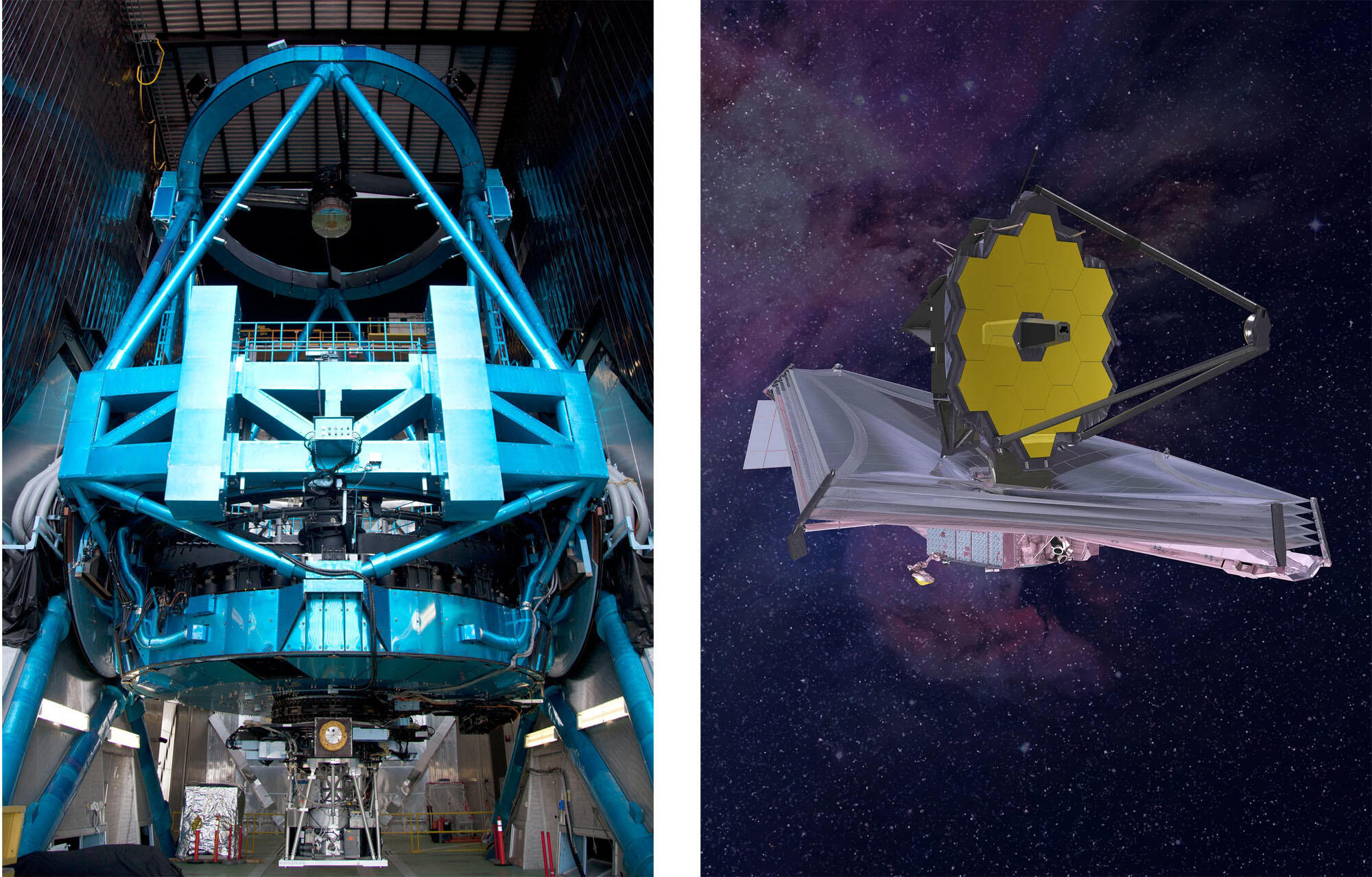The stunning image of a "firecracker" at the edge of the Milky Way Galaxy recently released by NASA’s James Webb Space Telescope (JWST), would not have happened without previous observations of the same area by the Subaru Telescope.

Figure 1: The JWST image of star-forming region, Digel Cloud 2S on the outside edge of the Milky Way Galaxy. Newly formed stars and their extended jets of material were detected. The image also shows a red nebulous structure around the star-forming region, and background galaxies. In this image, colors were assigned to different filters from Webb’s MIRI and NIRCam: red (F1280W, F770W, F444W), green (F356W, F200W), and blue (F150W; F115W). A high resolution image is here (5.1 MB). (Credit: NASA, ESA, CSA, STScI, Michael Ressler (NASA-JPL))
Natsuko Izumi, of Gifu University and the National Astronomical Observatory of Japan, has been studying star forming regions on the extreme outer edge of the Milky Way Galaxy for years using different telescopes, including the Subaru Telescope. Dr. Michael Ressler, of NASA's Jet Propulsion Laboratory in California, took an interest in her team’s results with the Subaru Telescope, and decided to offer his allotted time on JWST to collaborate with the team to study the area in more detail.
Izumi accepted Ressler’s offer of JWST observing time. "In the past, we knew about these star forming regions but were not able to delve into their properties," she explains "We can get very powerful and impressive images of these clouds with Webb."
As a result of the observation, many young stellar objects, as well as jet structures, and distinctive nebular structures were clearly detected (Figure 1). This is the first time that such spectacular jets have been clearly detected in the extreme outer Milky Way. Ressler, comments, "What was fascinating and astounding to me from the Webb data is that there are multiple jets shooting out in all different directions from this cluster of stars. It’s a little bit like a firecracker, where you see things shooting this way and that."
We look forward to further collaboration between Subaru Telescope and the James Webb Space Telescope.

Figure 2: The Subaru Telescope (left, Credit: NAOJ) and an artist’s conception for the James Webb Space Telescope (right, Credit: NASA)
These observation results were published in Astronomical Journal on July 10, 2024 (Izumi et al. "Overview Results of JWST Observations of Star-forming Clusters in the Extreme Outer Galaxy").


